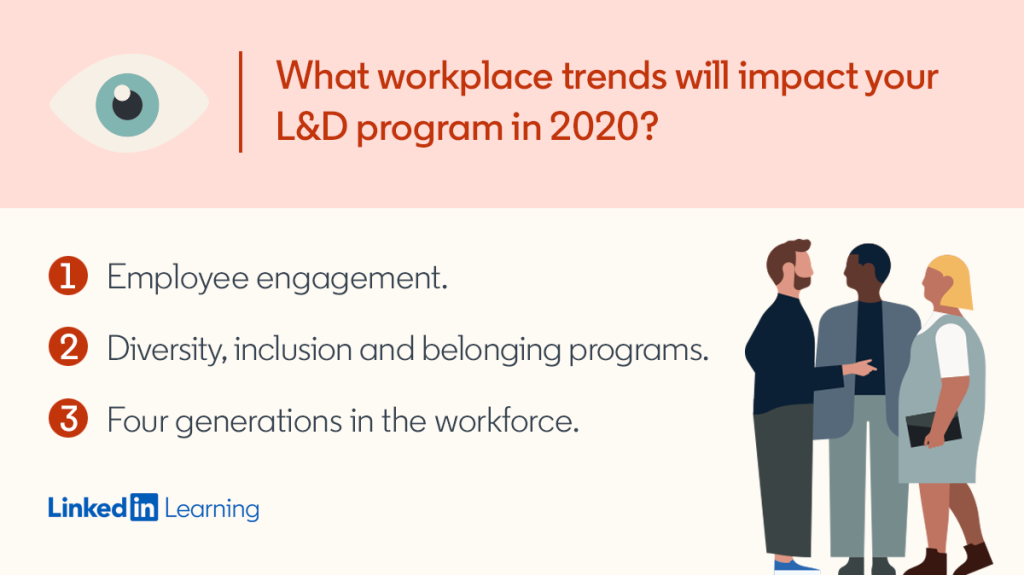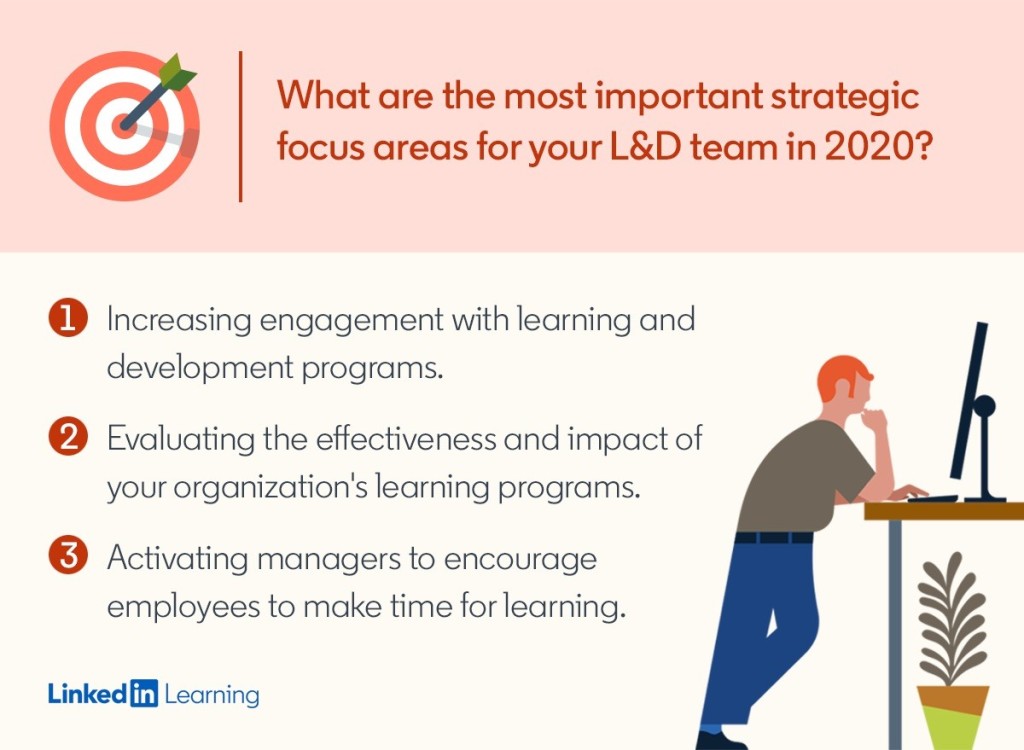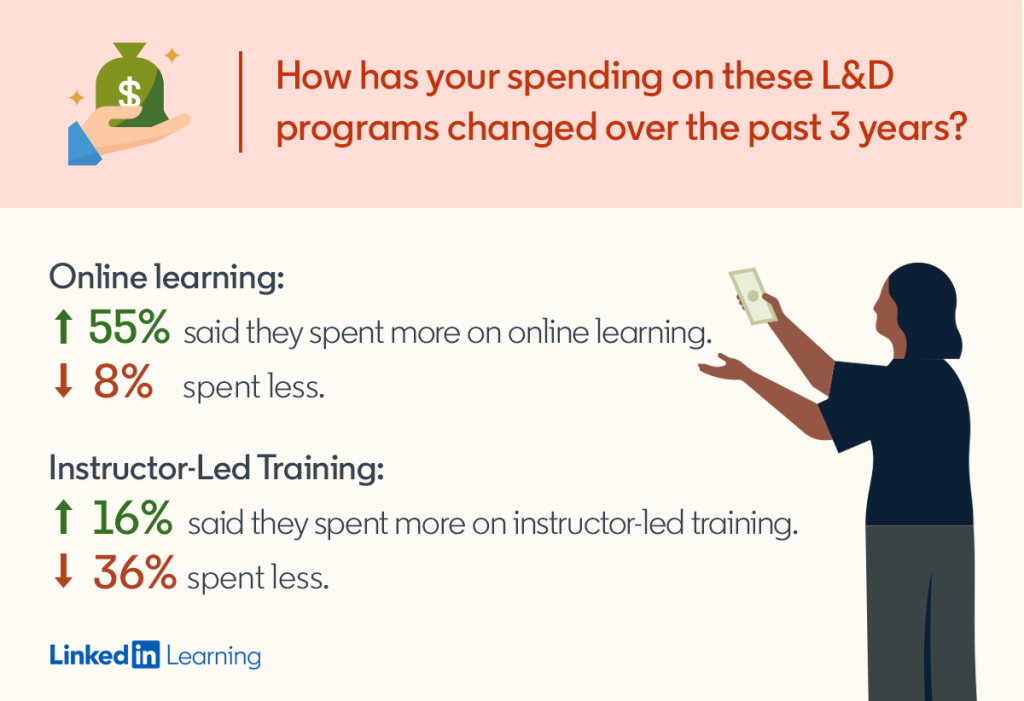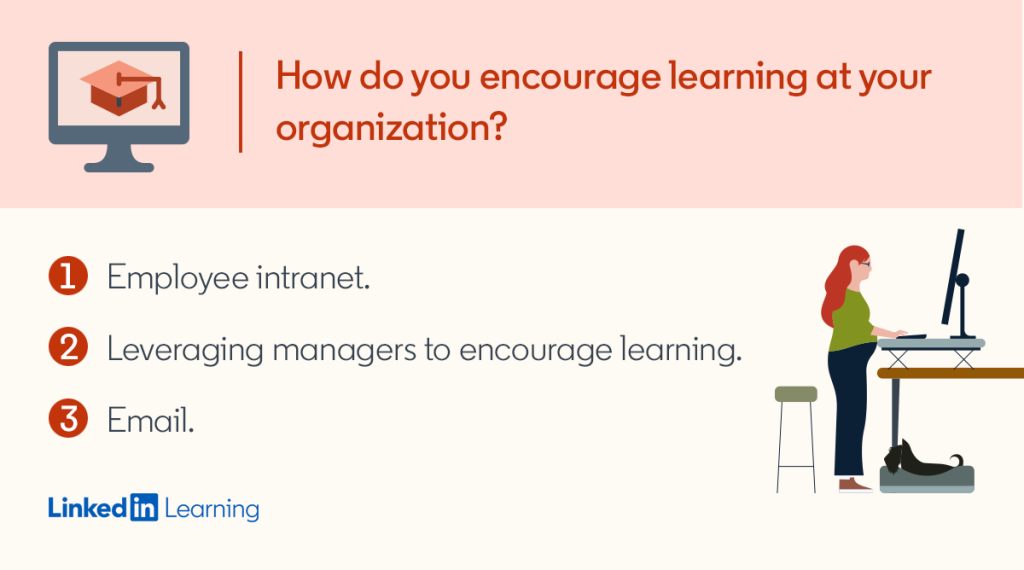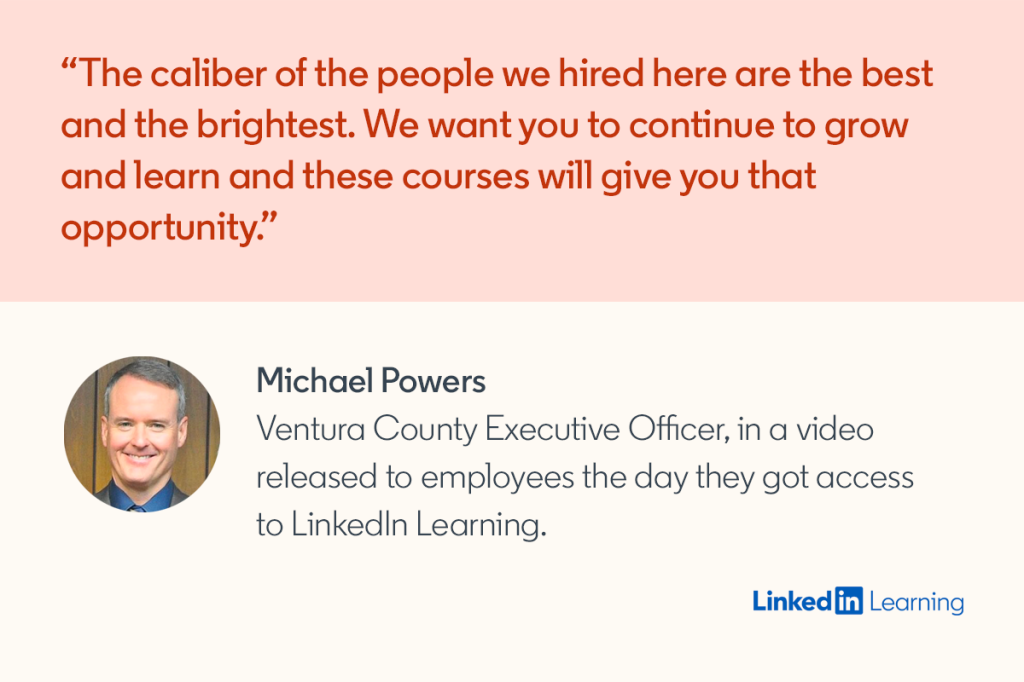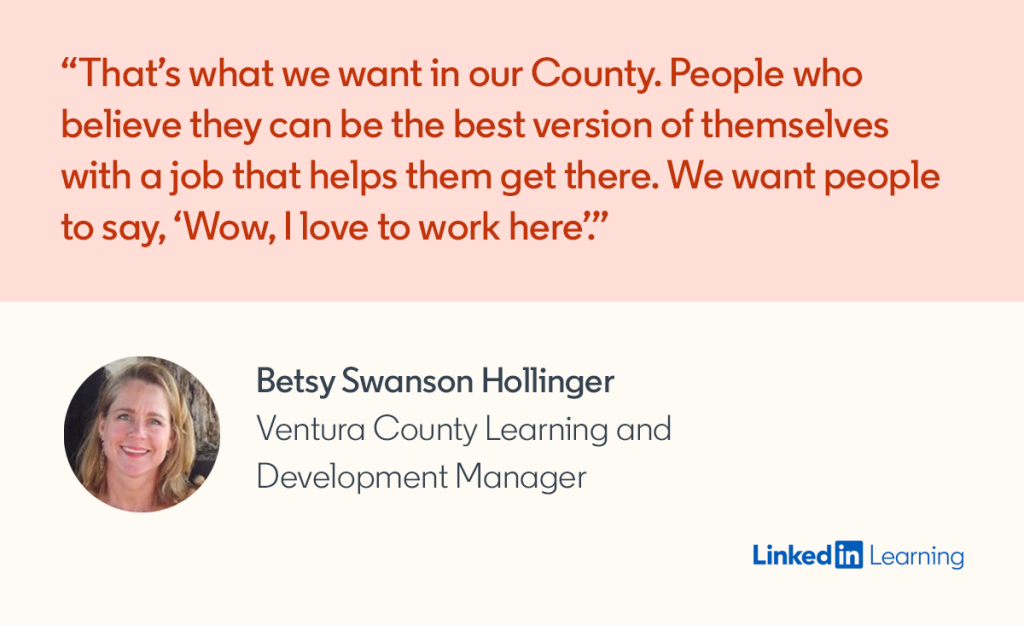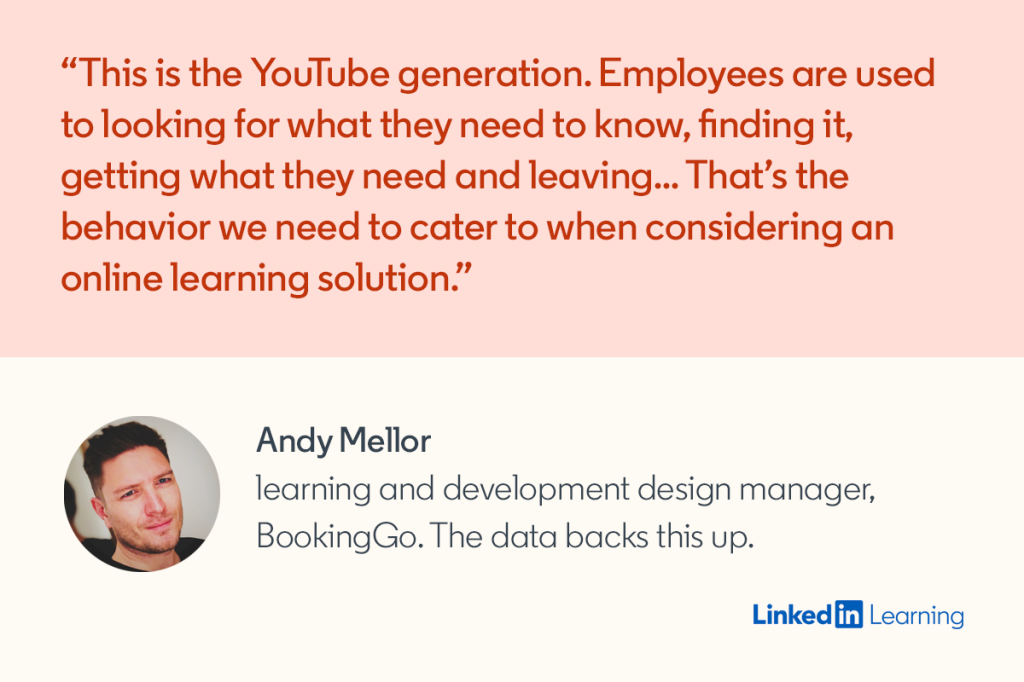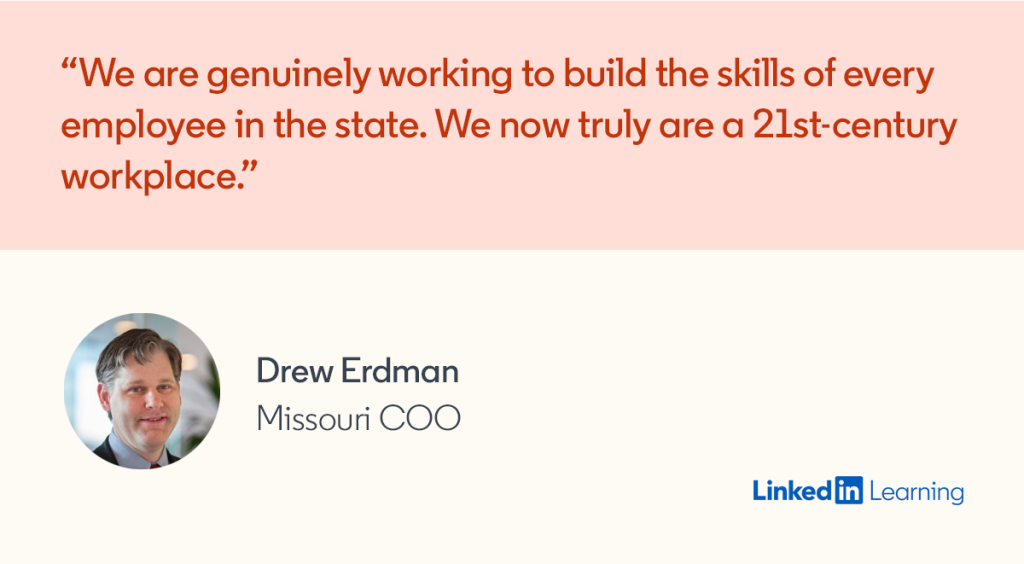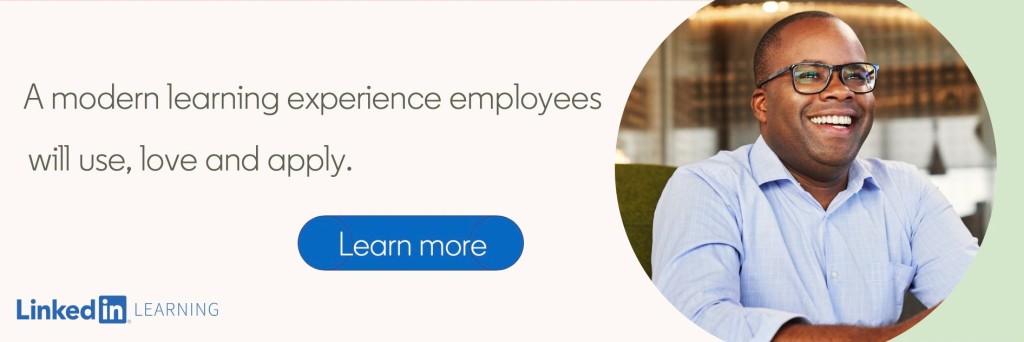Workplace Learning Report: Government Edition
For this piece, which compliments our fourth-annual Workplace Learning Report, we surveyed 110 global government talent developers, 2,000 professionals and spoke to government leaders successfully developing talent at scale. What we found is:
Improving employee engagement is the #1 priority of government talent developers.
Compared to their corporate counterparts, government talent developers are even more focused on improving employee engagement (+10 percentage points, compared to corporate talent developers). They also have an increased interest in diversity programs and generational differences in the workforce, which ties back to their bigger goal – they want to increase employee engagement at their agencies.
There's a good reason for this. According to Gallup, 71% of US government employees are disengaged, costing taxpayers $500 billion annually in lost productivity. Gallup reports similar findings among government workers across the globe.
But how? Government talent developers believe more learning = higher employee engagement. They are right.
With employee engagement their biggest challenge, how are government talent developers looking to solve it? By driving more people into their learning offerings.
Evidence supports this approach – if employees feel like they can grow within an organization, they are much more likely to be engaged with their job and bring their best each day.
To increase learning at scale, government talent developers are investing more and more in online offerings.
What type of learning offerings are government talent developers investing in to drive employee engagement? Increasingly, they’re eschewing instructor-led training for online offerings.
And specifically, government talent developers are focused on building soft skills.
What skills are government talent developers most focused on building? The research is clear – it’s all about soft skills like leadership, creativity and communication.
We asked government talent developers the skills gaps they most wanted to close in 2020. Their response:
1. Leadership/management
Recommended courses:
- Getting Your Talent to Bring Their Best Ideas to Work
- Managing a Diverse Team
- Coaching and Developing Employees
2. Creative problem-solving
Recommended courses:
3. Communication
Recommended courses:
This harkens back to employee engagement. Yes, more learning = higher engagement. But so does better organization-wide communication, innovation and leadership.
To drive employees into online learning, government talent developers are relying primarily on tried-and-true channels.
The need for learning is clear. But how are government talent developers marketing online learning to their employees?
These work – professionals said postings on the organization’s intranet, through their managers and via email are some of the best ways for them to discover learning offerings. But there are other tactics that can move the needle as well.
Other marketing techniques can be highly effective. Like turning your executives into learning champions.
Getting the leaders of your organization to champion learning is an effective way to drive adoption. Yet only 20% of government talent developers said their leadership team is a champion of learning.
How do you get leadership to care about learning? Tie it to your agency’s mission – all the data shows a culture of learning = higher employee engagement, which means a more productive, committed workforce.
Read more on our blog: Your Executive Should Be Your Biggest Learning Champion. Here's How to Make That Happen.
An example of what executive buy-in can do: Ventura County.
In 2019, the Government of Ventura County invested in 9,000 LinkedIn Learning licenses for all their employees. To drive engagement of the platform, County Executive Officer Michael Powers released a video promoting LinkedIn Learning the day employees got access.
It worked. In six months after launching LinkedIn Learning, employees watched more than 53,000 videos on the platform. More importantly, the learning culture increased employee engagement within Ventura.
An underutilized approach in government – incorporating learning into existing talent initiatives.
Compared to their corporate counterparts, government talent developers are 15% less likely to incorporate online learning into new and existing talent initiatives.
This is a huge opportunity. Not only does weaving online learning into existing talent initiatives like onboarding and new-hire training make those programs more effective, it makes online learning more of a habit for employees and ultimately drives adoption.
An example – the State of Nebraska weaved online learning into their leadership program for a win-win.
In 2017, the State of Nebraska was trying to solve two problems:
- Increase employee engagement and retention, particularly among younger workers.
- Create a stronger succession plan, as many of their established leaders were retiring and they needed younger workers to step into bigger roles.
They helped solve both problems with one solution – a year-long voluntary leadership program, which involved both in-person and online courses.
This improved employee engagement as employees – particularly younger employees – crave development opportunities and a path upward. And it also helped in succession planning, as the program helped prepare a new generation of workers to take on leadership roles.
The result of this program? Employees who participated were five-times more likely to be satisfied with their job and four-times less likely to leave.
What existing talent initiatives can you bolster with online learning? Or, better yet, what talent initiatives can you create, which will address the biggest needs of your agency?
It’s also critical to invest in a platform employees will want to use.
All the promotion in the world won’t matter if you are driving employees into a platform they won’t want to use. So, what are the features employees most want in an online learning solution?
According to a survey of 2,000 professionals, what today’s workers most want in an online learning solution is one that offers:
- Personalized recommendations that’ll help them do their current job better.
- The ability to learn something within three-to-five minutes.
- A single destination for all learning resources.
Hence, it’s critical to invest in an online learning solution that offers:
- Personalized course recommendations.
- Macro and micro learning opportunities.
- A wide breadth-and-depth of content to meet a diverse set of needs.
What it can look like – Missouri’s state government drove learning at scale, which led to higher employee engagement.
After “years of neglect” when it comes to skill building, Missouri’s state government went all-in in 2019, investing in 50,000 LinkedIn Learning licenses for every state employee. To drive engagement, they:
- Had their leadership team champion it, from the governor on down.
- Weaved it into existing talent programs, like new manager training and onboarding.
- Uploaded their own content into the platform, further increasing usage.
The results?
- 1.8 million learning videos viewed after just seven months.
- 54% of Missouri state employees agreed or strongly agreed that the quality of professional development they receive improved year-over-year.
A playbook for driving learning engagement at your organization.
As government talent developers, the more you can engage employees with your learning offerings, the more engaged they’ll be overall. The key is driving that adoption.
Based on our data and customers seeing success, the ideal playbook for driving learning engagement in government is:
- Investing in the right online platform.
- Having your executives champion said platform.
- Yes, promote it via tried-and-true methods like email and intranet — but also weave it into existing programs and try some more creative tactics, like desk drops and seasonal campaigns.
- Giving employees the time and freedom to learn.
Nail those four steps, and the research shows you’ll see higher learner engagement and higher employee engagement at your agency.
This is the government version of our 2020 Workplace Learning Report. See the full report here.
Topics: Government Learning and development
Related articles




